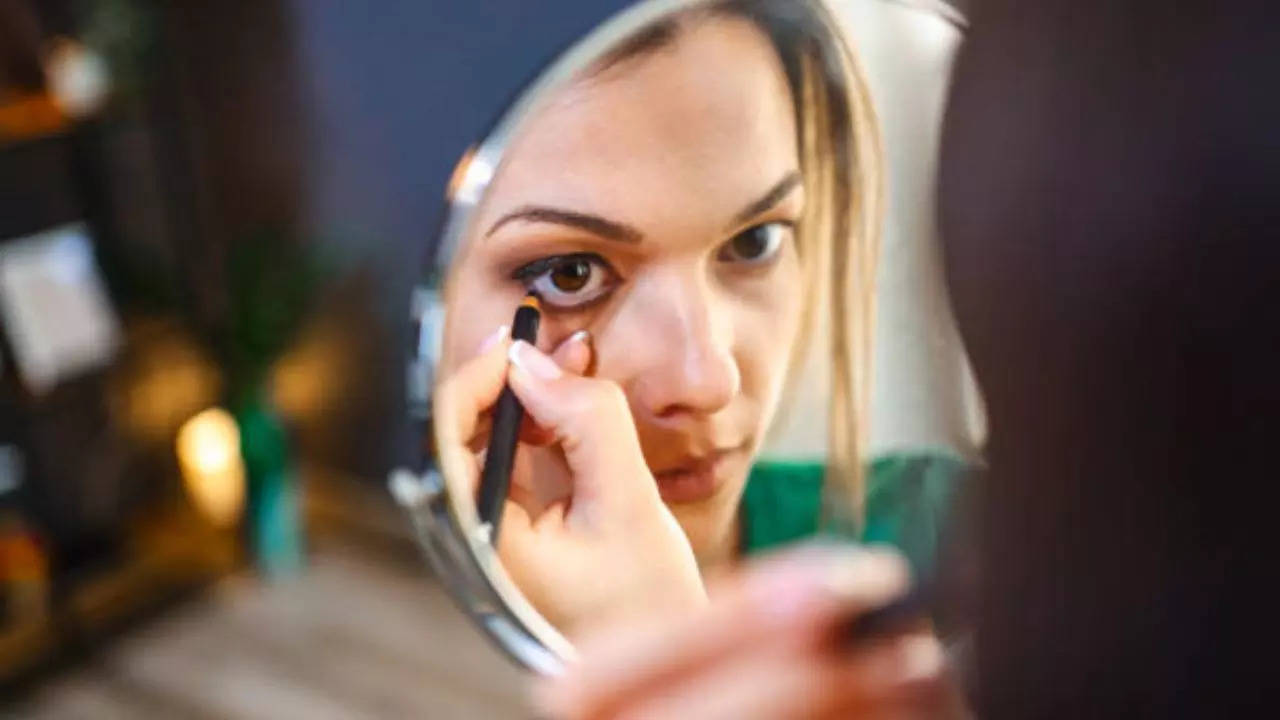-
news
-
Health
Is your kajal damaging your eyes? Experts share the risks you can’t ignore
Kajal has been a beauty essential for centuries, believed to enhance and protect the eyes. However, modern mascara products often contain harmful chemicals, which pose risks such as allergies, infections, and blockage of tear ducts.

Is your kajal damaging your eyes? Experts share the risks you can’t ignore (Image credit: iStock)
Kajal, or kohl, is something that has been around for centuries. People consider it to improve eyesight and even provide cooling benefits and protection from eye infections. For generations, it has been a staple of women’s makeup kit, with many women feeling incomplete without kajal on their eyes. Traditionally made from natural ingredients such as soot and clarified butter (ghee), it was believed to have medicinal properties, protect the eyes from infection and reduce glare from the sun. However, in the modern age, commercially produced kajals often come with a variety of chemical ingredients, which can affect the health of your eyes.
To get expert advice, Times Now contacted an ophthalmologist and an Ayurvedic expert who share the risks, benefits and dispel common myths about kajal.
“Being an ophthalmologist, patients often come to me with the question whether applying kajal is beneficial or harmful for eye health. Kajal is usually a mixture of several ingredients, including soot, natural oils, and wax. Traditional home-made products include charcoal and herbal extracts; However, commercial products likely contain added preservatives, pigments, and more chemicals. “The composition of kajal plays an important role in determining the safety of kajal as well as its potential benefits or risks,” said Dr Komal Sangoi, ophthalmologist at Wockhardt Hospital, Mumbai Central.
In Ayurveda, ajna (collirium) is used to maintain eye health and improve vision, it is believed to purify the eyes by removing impurities such as excess phlegm (Ashtanga Samgraha, Sutra 32 /16) Child is not mentioned as a prohibition of Ajna. Kajal, a form of Ajna, is beneficial for treating conditions like eye disorders, headache (Shirorog), mental disturbance etc.
Dr. Sandeep Kisan Rajput, BAMS MD, HoD, Associate Professor of Pediatrics (Paediatrics), YMT Medical College, Navi Mumbai explains that all the adult treatment protocols used in children (Bhaishajya Ratnavali 71/4, Charaka Chikitsa 30/283 ), although effective, should be used with caution for children, as their eyes are sensitive (Charaka Samhita, Sutra 5). To avoid any adverse effects, Anjna is usually administered in small doses, especially for children.
Common Myths About Kajal
Dr Komal dispels some common myths about applying kajal.
1. Cooling effect
There is a belief that mascara has a cooling effect: the cooling effect would be more anecdotal than scientific reason.
2. Protection from infection
This is not true. In fact, if not stored properly, not used after the expiry date and shared it can infect your eyes.
3. Improves eye health
There is no scientific evidence that applying kajal improves eye health or vision. It is mainly used for cosmetic purposes.
Risks associated with applying kajal
Dr Komal explains the risks associated with applying kajal.
1. Eye irritation and allergies: Some kajals may contain lead or heavy metals, which can cause eye irritation, red spots or even allergies.
2. Infection: Kajal can contain bacteria if the product is used unhygienic as people hand it to each other. Contaminated kajal increases the risk of pink eye.
3. Tear duct blockage and dry eyes: Tear ducts are present along the water line in both the eyelids. Applying kajal along the waterline can clog them; That is, the inner edge of the eyelid, which causes dryness, swelling, and cavitation.
4. It can pose a risk to children, it should be completely avoided. This can cause irritation, drainage and infection.
“Parents often apply kajal to babies, in the belief that it protects them or makes them more beautiful. However, pediatric ophthalmologists strongly discourage this practice. Babies have delicate eyes and kajal, especially if it is contaminated or contains harmful chemicals, can cause severe irritation or infection,” she said.
How to use mascara safely
• Choose a quality product: Always choose branded kajal that is safe to use. Look for marks that indicate products are free of harmful chemicals like lead or parabens.
• Allergy test: Before applying to eyes, test on a small area of skin.
• Avoid the waterline: Apply mascara outside the outer edge of the eyelids to prevent dust and germs from entering the eyes and blocking the tear ducts.
• Don’t share: Don’t use someone else’s mascara, and keep them in a clean, dry place. Always change it after certain period of time to avoid contamination.
• Avoid kajal for children: Do not apply kajal to infants and small children as their eyes are very sensitive.
Get the latest news live on Times Now with breaking news and top headlines from around the world.


